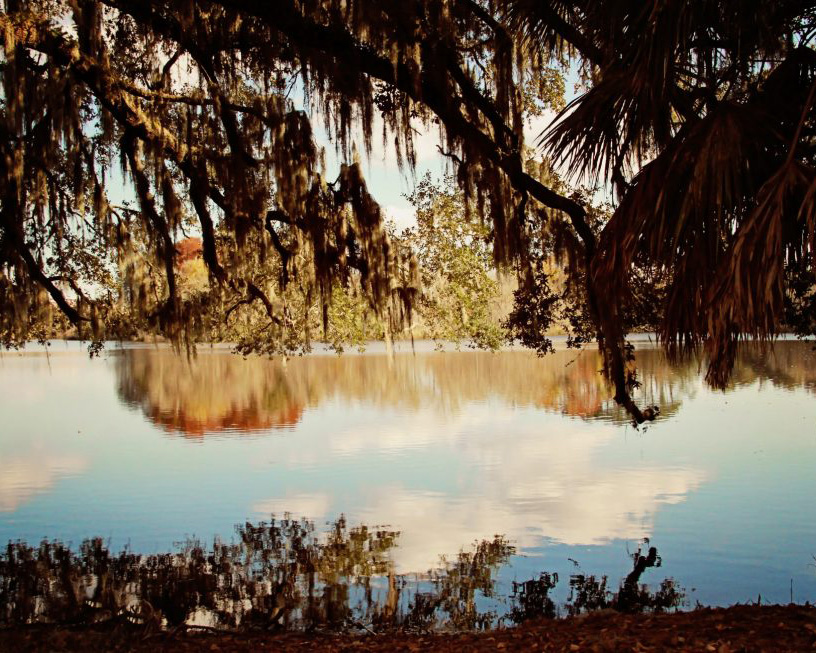Knowing the Wine-Dark Sea

As we drive down the long road to the lighthouse, we take bets on how many gators we will see. On a cool winter’s day, the answer is not many. As we reach the lighthouse, broad levees separate the freshwater marshland and coastal hammocks from the Gulf of Mexico. The varied habitats of the wildlife preserve give refuge to migratory birds and endangered species. Some years we can view the nesting bald eagles without hiking beyond the main road. The landscape houses decades of memories – catching blue crabs in the summer and watching migrating monarchs in the fall. My favorite time to visit is on a sunny day after a cold front. On days like this, Saint Marks is resplendent. The wintering waterfowl feed in the lagoons, dabbling and diving. Across the path is the sparkling wine-dark sea.
The coastline has changed over the last several years after a series of hurricanes. Now, there is enough sand at low tide to turn left at the historic lighthouse and walk down the narrow shore. We have examined countless tracks in the sand. I have learned to notice the difference between the rounded track of the wild hog and the narrow track of the white-tailed deer. My children know the feel of the sabal palm’s bark. They have caught fiddler crabs, watched osprey feed, and learned not to run toward gators. It is the best science classroom around – unmediated access to knowledge of the natural world.
Science education often obscures knowledge of creation. A one-time visit to a local co-op years ago gave me an object lesson in epistemology. The classical homeschooler’s desperation for community led me to investigate the group, though I suspected it was a poor fit. These elementary students were studying zoology – reading a textbook, discussing facts, and completing worksheets. On the day we visited, the subject was lizards. After asking a factual question about lizards from the assigned reading the teacher waited, staring into a sea of blank faces. My preschool-aged son raised his hand. As guests, we had not read the textbook; however, he had spent immeasurable hours with the green anoles in our yard. He knew what they ate and where to find them. He knew how they felt in his hand, and he knew the dark color they turned when they are ready to be left alone. A lizard is more than the sum of its parts that can be labeled on a worksheet and filed in a binder as “known.” He did not know them as specimens, he knew them in reality; he knew the is-ness of the lizard.
Southern writer Walker Percy discusses the challenges of salvaging the creature from its educational packaging. He was no stranger to science education; before becoming a novelist and essayist, he trained as a physician at Columbia University. In his essay, “The Loss of the Creature,” the image of a dogfish, lonely on the dissecting table, embodies his incisive commentary on modern education. A dogfish is presented in zoology class as a specimen of Squalis acanthias, placed on a sterile tray with forceps and a probe. With his wry wit, Percy comments, “Through no fault of zoology instructors, it is nevertheless a fact that the zoology laboratory at Sarah Lawrence College is one of the few places in the world where it is all but impossible to see a dogfish.” Presenting a dogfish as merely a specimen in a laboratory dims its essence as creation at best. Children do not need to be schooled in methods that give the “whole horizon of being” over to the experts. What children need is direct access to the being to be known.
Percy suggests that restoring access to the specimen as a being to be known also reasserts the sovereignty of the knower. Textbooks often and worksheets always are consumptive. They are mediated, giving the child passively learned abstracted knowledge (if it can be said to be knowledge at all). “The highest role of the educator is the maieutic role of Socrates: to help the student come to himself not as a consumer of experience but as a sovereign individual,” he writes. The sovereign individual, like Adam, is master over creation, naming and knowing. Grounding my children in direct knowledge of the natural world restores their rightful position as knowers.
An unknowable world is a fearful place. I have a similar conversation with every mother who is new to Florida – she is terrified of alligators. Her second-hand knowledge is: they are cold-blooded, live in water, and, from time to time, eat children. She does not know the look of the shoreline where one must be cautious. She does not know the feel of the temperature and the sun when one should be more watchful. We know gators from our outdoor classroom. As we walk down the levee this cold day, my son points out the numerous gator slides where the gators exit the lagoon to sun on the bank. Their familiar bullfrog-sounding croak is absent. It is unlikely they will be moving today. The sun, the shore, the slides, the sound – none of these are in a lab or on a worksheet. For that matter, neither is the wine-dark sea.
Rachel Woodham
Rachel Woodham has a BA in Russian Language and Literature and is a graduate student of Great Books at Harrison Middleton University. A classical educator for the last decade, she now homeschools her three all-time favorite students.










